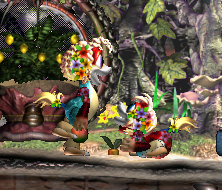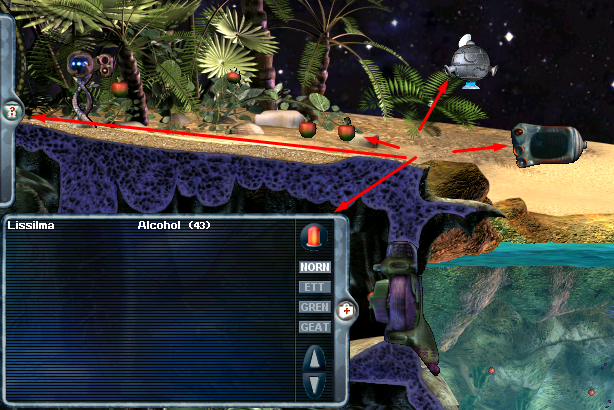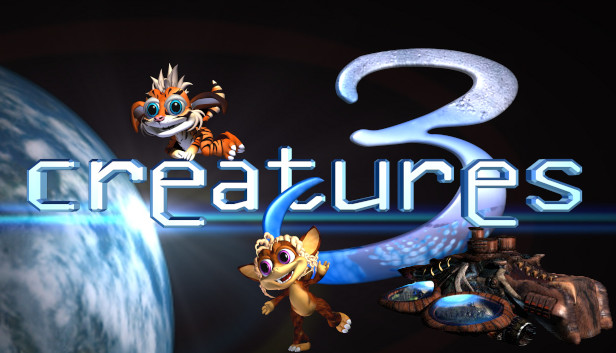If you want to play Creatures Docking Station mods, this guide will explain where to find modded content, and a breakdown of folders and filetypes.
Introduction
So you just downloaded Docking Station for the first time, or you’re returning after a decade or more, and the space is starting to feel cramped, or you saw some wonderful screenshots of colourful norns, and you want to add them to your game.

(Primavera norn hybrids, art by Mairenn)
Docking Station is easily moddable, almost everything in game can be replaced, tweaked or added to. Amongst the most popular mods are: additional rooms, some of which come with their own animals and plants, some are empty and require customising. New breeds, be they just genetic files, recolours, or full on new art (for norns, ettins, grendels, and even the unimplemented 4th species ‘geats’ though those require a lot of patching.).
You can add animals, plants and toys to make your norns’ life easier, or create challenges to their survival. There are teleporters, movable elevators, utilities of all sorts to mess with norns, such as biochemistry graphs and random egg splicers, and finally for the more experienced users, UI mods, and scripts that heavily modify your game (such as enabling breeding between species or same-sex creatures).
The Creatures community has a long history of modding, just as old as the Elder Scrolls series (Creatures 1 and Daggerfall were both released in 1996!). The distribution of these mods however was never really organised in a Nexus or single forum, but spread out over many personal websites. After the disappearance of Geocities, and the slow exodus of community members as no new games were coming out, folks became concerned with how easily we could lose access to important mods, and started downloading them en-masse, burning them to CDs, even sharing them as P2P “dumps” of hundreds of mod files.
“Oh no, that sounds like a mess”, I hear you say. Well, luckily the situation has improved these days. We have multiple archives and repositories even as we wonder if Workshop integration will ever be possible.
This was the last surviving forum for most of the 2010’s, until the discords and subreddit picked up. Along with the boards, it has archives for mods, norn adoptions, art and game guides. The link will take you to the download page where you can pick a category and start browsing. The search function can be a little slow, and a few of the mods may link to a page that is no longer working, but it’s the easiest way to discover new mods or find something you don’t remember the exact name of, because the categories and item descriptions should help.
This is the ultimate archive, every mods that has not been lost is here in some form. Once you know the name of the mod you’re looking for, you can hit ctrl-f on your browser and use that to search or it.
Better ways to search Eem Foo are in the works, but for now you’re better off using one of the other sites to search for mods and find out what they do first. Zips do usually include a readme with credits and some information, but that depends on the original mod author.
The wiki is a good way to search for a specific mod author to see what else they have done, and look at their original site information (usually through an web.archive.org link, but many modders are still active.)
Just make sure you’re using Creatures.wiki and not the Creatures.fandom that will come up in google searches: it’s an outdated, broken wiki.
Installing mods
Mods can come in a variety of files, mostly downloads will consist of a single Agent file to put in My Agents, or have pre-sorted folders so you can just copy everything over and have it go to the right place. Lastly, they will have a readme with instructions if you’re struggling.
But, just in case something’s gone awry, or you want to learn about modding yourself at some point, I’ll do a rundown of all the file extensions you’re likely to encounter, so you know how to handle any possible conflicts.
This is where .ds.creature files go. these contain a single creature that has been exported from a world (here is where norns disappear to when you hit “export” and they vanish in a puff of sci-fi blue) They can be exchanged with other users or imported to a different world. An imported creature disappears from the folder, but if you want to back up a creature, you can safely make copies of it, the game handles clones just fine.
Note that since DS is actually an update to C3, norns that were exported from DS can no longer be imported to C3 standalone.
This is where objects are stored. If you’re a returning player, you might remember that in Creatures 1 and 2 they were called “COBs” for “Creatures OBjects”. Interactables from plants to food to extra sidebar doodads are Agents, and use a .agents extension

Agent agent agent agent…
Most mods you download, even whole metarooms and new breeds, will simply come as an Agent file, plop it in My Agents and you’re done!
The important things about agent files is they can be “packed” agents, meaning they can contain their own sprites, sounds, text and pose files (we’ll see about those soon). Packed agents extract those automatically to the right folders the first time they’re added to a world, by injecting an agent with an agent injector (we’ll see about those as well), or injecting a packed breed with a hatchery.
